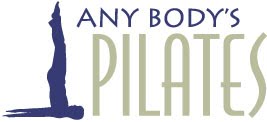I had a client on the Reformer for the first time, and after seeing how she positioned her feet for the Footwork Series, I asked, "Do you wear out the outside soles of your shoes faster than the rest?" Amazed, but excited someone noticed, she said, "YES, always! How did you know?!"
Walking (or worse, running) on the outsides of your feet (supinating) or the insides (pronating) is common, and is caused by poor alignment. Whether the cause is farther up your spinal column and your feet are compensating, or the position of your feet is causing your spinal column to compensate -- the alignment of feet-to-knees-to-hips-to-shoulders is off-kilter. The misalignment causes pain as some muscles are overtaxed and tighten up, some joints have more weight and work than others, and one side of the body becomes stronger while the other weakens and atrophies. Many clients have been suffering with chronic back, hip, knee, or ankle pain for years, often visiting doctors and chiropractors regularly, but have never addressed the alignment of their feet. Once they do, frequently the pain disappears.
 | |
| Pumping on High Chair |
Misalignment of the feet is usually visible during Mat Pilates, but is nearly impossible to hide when working on Pilates equipment. Many clients don't see the alignment issues on the Mat, even when the instructor explains, but clients can easily see (and feel) the issue when they're on Pilates apparatus.
By correcting the alignment of the spine, and focusing on foot placement, the client stretches and strengthens muscles that have atrophied, while taking the extra load off overtaxed muscles and joints. Getting the body properly supported, balanced and working together as intended will extend the life of your shoes, as well as your spine and joints, and - BONUS - may relieve chronic pain.
The client who supinates, started out as a Mat class (only) client. During Spine Stretch Forward or Saw, she turned her feet almost sidewise with her pinky toes turned completely away from her body. During Shoulder Bridge, she'd roll onto the outsides of her feet, causing her knees to go well outside the outline of her shoulders. With a ball between her knees, she would still roll to the outsides of her feet. It wasn't until she finally took a private session and was on the Reformer during the Stomach Massage series, where she could see her feet roll to the side, that she became conscious of this habit. Pumping on the High Chair was very challenging for her, but also very helpful in learning to put more pressure on the insides of her feet, in order to maintain the alignment of toes-to-knees-to-hips.
Check the soles of your shoes, and if you're wearing them out on the outsides (or insides) more than the rest, ask your Pilates instructor to check your alignment and see if you can't relieve that chronic back, hip, knee or ankle pain.




